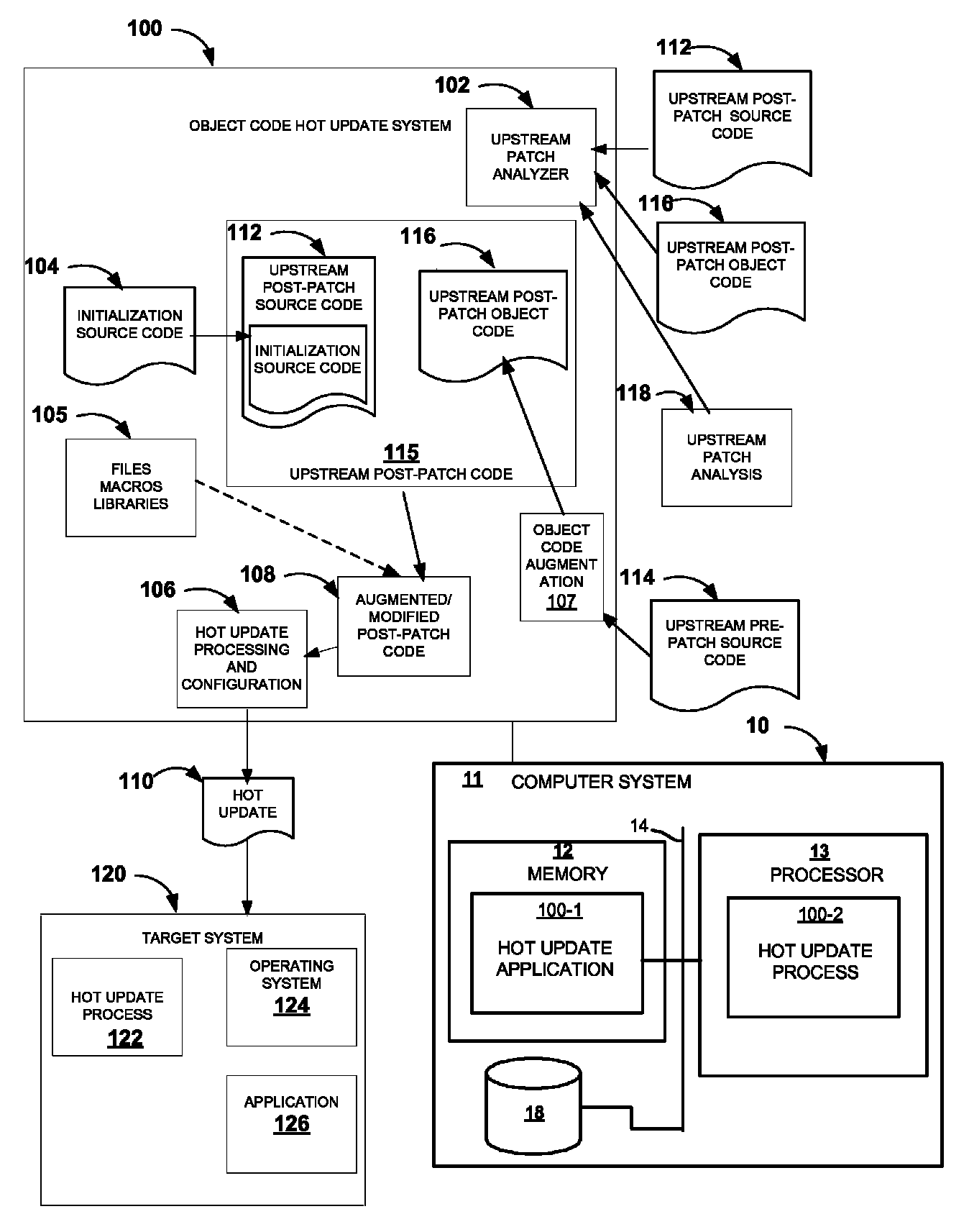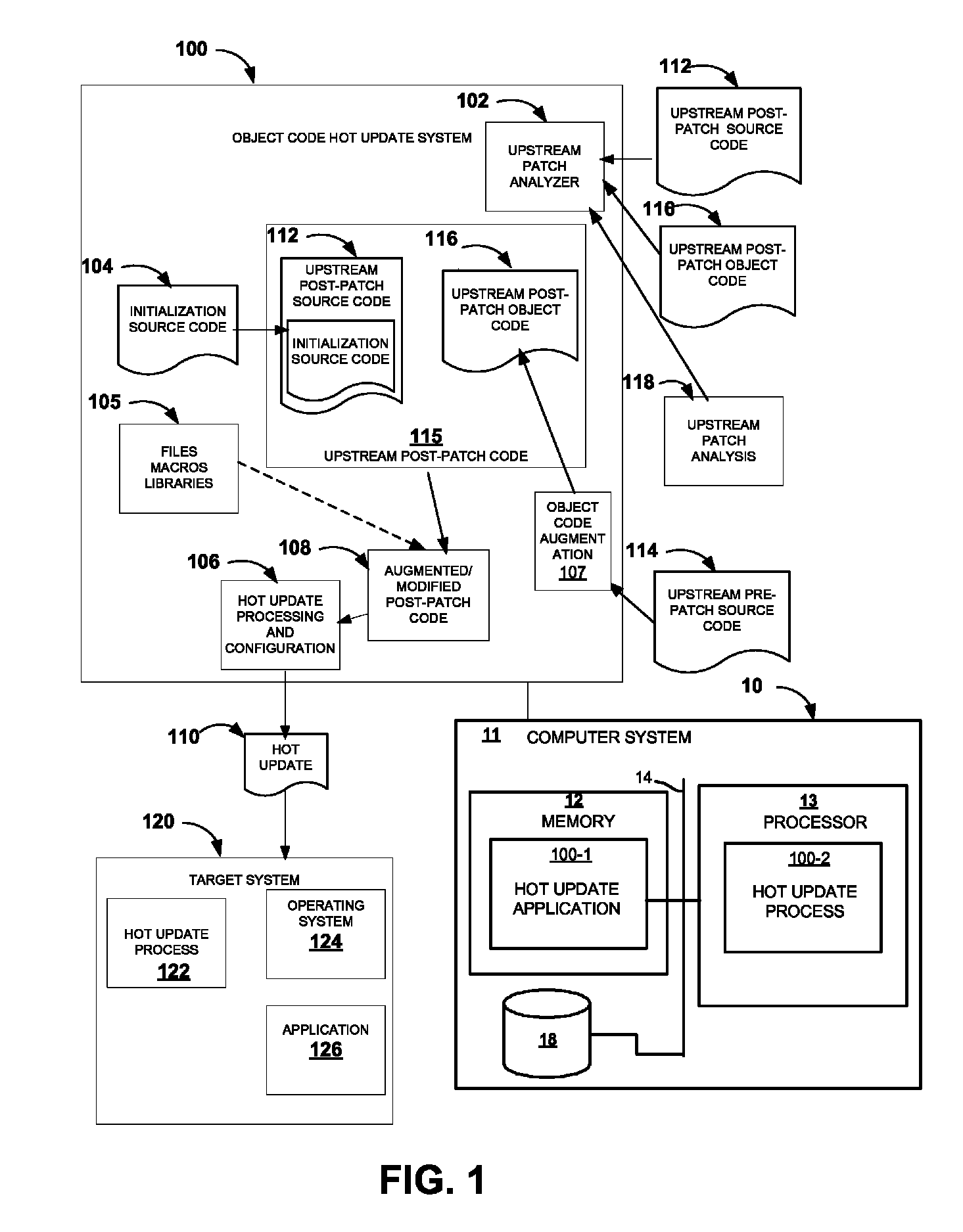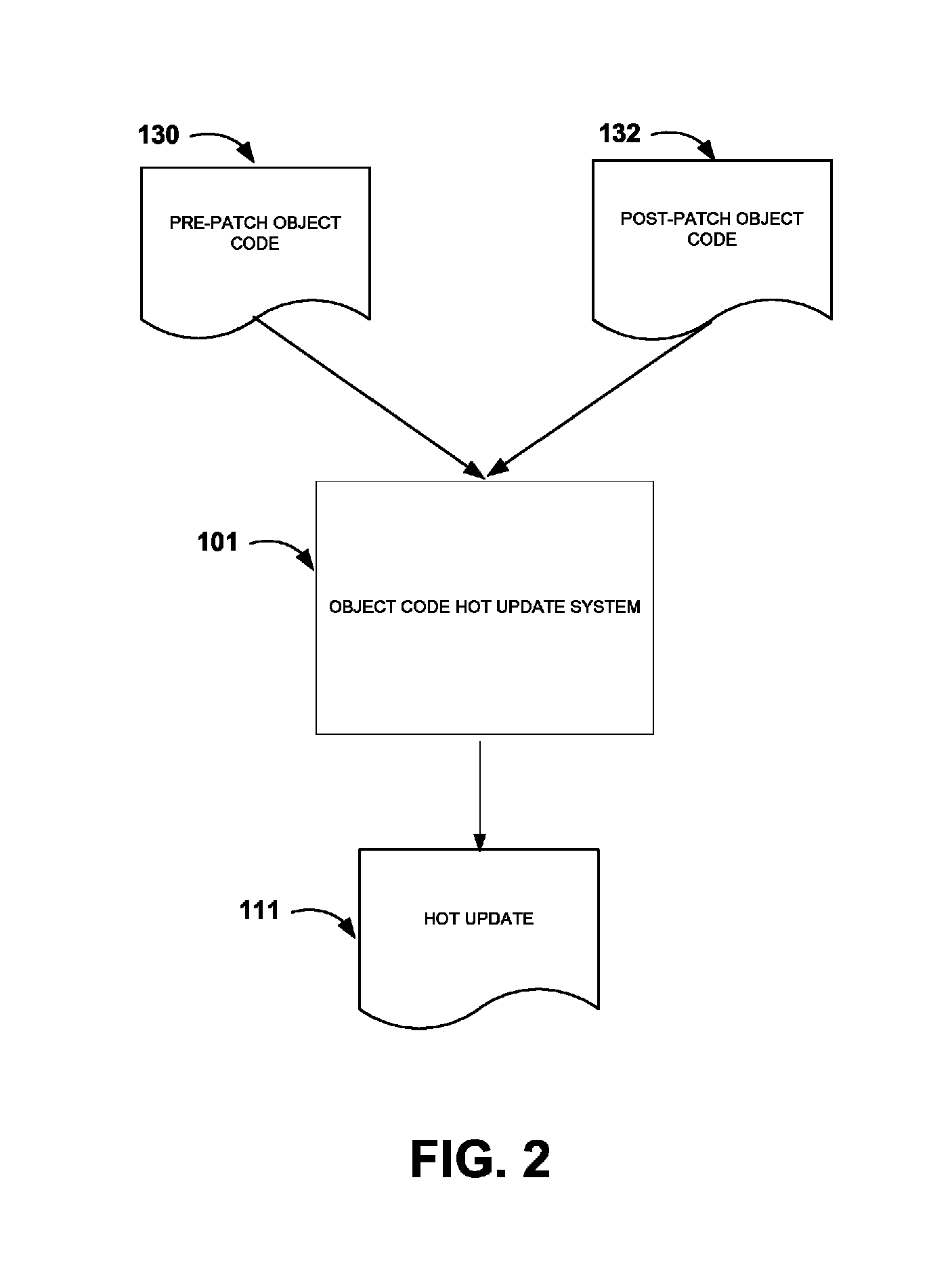System and methods for object code hot updates
a technology of object code and hot updates, applied in the field of system and methods for object code hot updates, can solve the problems of unsafe modification or replacement, limited hot update system types, and difficult application of updates that modify many functions or heavily used functions, so as to minimize the amount of unnecessary modifications to the program, the effect of minimizing the amount of unnecessary modifications
- Summary
- Abstract
- Description
- Claims
- Application Information
AI Technical Summary
Benefits of technology
Problems solved by technology
Method used
Image
Examples
examples
[0064]The attached Appendix includes exemplary source code which demonstrates techniques described herein applied to certain exemplary updates. Each exemplary update is a security update developed for the Linux operating system kernel between 2005 and 2009. Each example includes three source code patches. A patch labeled “upstream” is a source code patch developed by the Linux operating system kernel development community to address a specific security problem; in the context of object code hot updates, each example upstream patch poses one of the challenges discussed herein. A patch labeled “full” is a version of the upstream patch modified according to an embodiment of the present invention in order to address the challenge. A patch labeled “changes” shown for clarity illustrates the difference between the upstream patch and the full patch. The patches comprised by the example update labeled “CVE-2006-1056” are arranged differently as described below. Each example update is discus...
PUM
 Login to View More
Login to View More Abstract
Description
Claims
Application Information
 Login to View More
Login to View More - R&D
- Intellectual Property
- Life Sciences
- Materials
- Tech Scout
- Unparalleled Data Quality
- Higher Quality Content
- 60% Fewer Hallucinations
Browse by: Latest US Patents, China's latest patents, Technical Efficacy Thesaurus, Application Domain, Technology Topic, Popular Technical Reports.
© 2025 PatSnap. All rights reserved.Legal|Privacy policy|Modern Slavery Act Transparency Statement|Sitemap|About US| Contact US: help@patsnap.com



